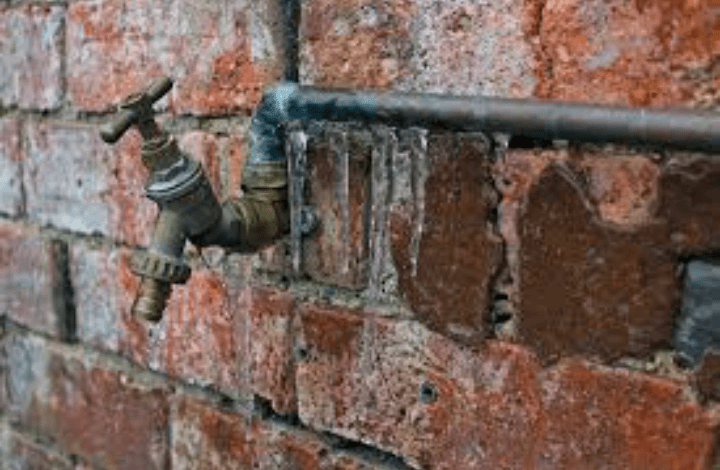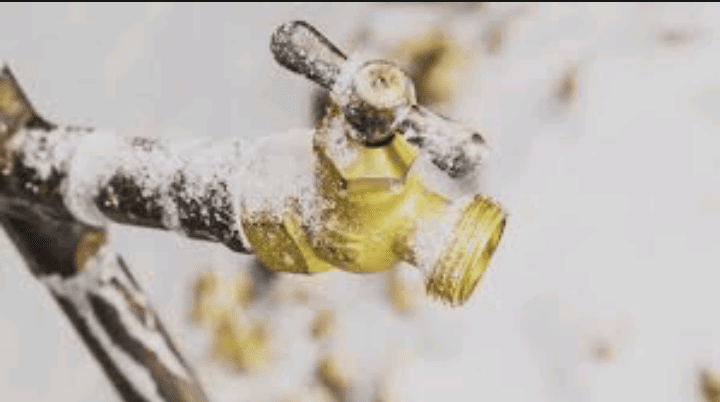As winter casts its icy spell, the threat of frozen outdoor water pipes becomes a common concern for homeowners. The biting cold can wreak havoc on plumbing systems, leading to inconvenient disruptions and costly repairs.
The good news is that you don’t need to be a plumbing expert to tackle this issue head-on. In this straightforward guide, we’ll explore simple methods on how to keep outdoor water pipes from freezing DIY. Whether you’re a seasoned DIY enthusiast or just getting started, these practical solutions will help you safeguard your pipes and ensure a hassle-free water supply throughout the winter months.
Understanding the challenge is the first step toward conquering it. When water freezes, it expands, exerting pressure on pipes and potentially causing cracks or bursts. Outdoor pipes, exposed to the elements, are particularly vulnerable. But fear not – with a bit of DIY spirit and the right techniques, you can shield your pipes from the winter chill.
We’ll take you through various approaches, from insulating your pipes using affordable materials to draining and shutting off outdoor water lines.
Discover how to protect outdoor faucets with simple covers or homemade insulation. For those facing extreme winter conditions, we’ll even explore the option of burying pipes below the frost line. If complete drainage isn’t feasible, we’ll show you how to use antifreeze solutions to keep your plumbing system running smoothly.
So, roll up your sleeves, grab your toolkit, and let’s embark on a DIY journey to ensure your outdoor water pipes stay warm and functional, even when the weather turns frosty.
Read also: DIY Bed Frame: Building Comfort and Style
How to Keep Outdoor Water Pipes From Freezing DIY

1. Understanding the Threat:
Before we delve into the solutions, it’s essential to understand why outdoor water pipes are vulnerable to freezing. Water expands when it freezes, and this expansion can exert tremendous pressure on pipes, causing them to crack or burst. As outdoor pipes are exposed to the elements, they are particularly susceptible to freezing temperatures.
Therefore, it becomes crucial to take proactive measures to prevent such occurrences and ensure the longevity of your plumbing system.
2. Insulating Outdoor Water Pipes:
One of the most effective ways to protect outdoor water pipes from freezing is through insulation. Insulating your pipes creates a barrier that helps retain heat, preventing them from reaching freezing temperatures. Here are several methods you can employ:
a. Pipe Insulation Sleeves:
Consider investing in pipe insulation sleeves made from foam or fiberglass. These sleeves are easy to install and provide excellent thermal protection. They are available in various sizes to accommodate different pipe diameters. Simply wrap the sleeves around the pipes and secure them with tape.
b. Heat Tape:
Heat tape, also known as heating cable, is another effective solution. It consists of an electrical cable that emits heat when plugged in. Wrap the heat tape around the pipes, focusing on vulnerable areas such as corners and joints. Be sure to follow the manufacturer’s instructions to avoid overheating.
c. Newspaper and Duct Tape:
For a budget-friendly option, insulate your pipes using layers of newspaper. Wrap the pipes with several sheets and secure them in place with duct tape. While not as effective as commercial insulation materials, this method can provide a degree of protection.
Read also: DIY Solar System: Harnessing the Power of the Sun
3. Draining and Shutting Off Outdoor Water Lines:
An alternative approach to preventing frozen pipes is to eliminate the water inside them. By draining and shutting off outdoor water lines, you remove the risk of water expanding and damaging the pipes. Follow these steps:
a. Shut Off the Water Supply:
Locate the main shut-off valve for outdoor water lines and turn it off. This will prevent water from flowing into the pipes.
b. Open Outdoor Faucets:
After shutting off the main water supply, open all outdoor faucets to allow any remaining water to drain out. Be sure to remove hoses and store them indoors.
c. Drain Sprinkler Systems:
If you have a sprinkler system, it’s crucial to drain it completely. Water left in the system can freeze and cause damage. Consult your sprinkler system’s manual for specific instructions on how to drain it properly.
4. Insulating Exposed Outdoor Faucets:
Outdoor faucets, also known as hose bibs, are particularly vulnerable to freezing. Insulating these fixtures can prevent water from freezing inside and causing damage. Here’s how:
a. Faucet Covers:
Purchase faucet covers, which are designed to fit over outdoor faucets. These covers are typically made of foam or insulating materials and provide a protective barrier against the cold. Secure them in place with straps or ties.
b. DIY Insulation:
If you prefer a DIY approach, you can create your own faucet insulation using materials like old towels or blankets. Wrap the material around the faucet and secure it with twine or zip ties. Make sure to cover the faucet thoroughly to prevent cold air from reaching it.
5. Burying Outdoor Water Pipes:
For those living in regions with extremely harsh winter conditions, burying outdoor water pipes below the frost line is a long-term solution. While this may require more effort, it provides a reliable means of preventing freezing. Follow these steps:
a. Determine the Frost Line:
Research or consult local authorities to determine the frost line in your region. The frost line is the depth to which the ground freezes during winter.
b. Excavate Trenches:
Dig trenches along the route of your outdoor water pipes, ensuring they reach below the frost line. The depth will vary depending on your location.
c. Lay Insulated Pipes:
Place insulated pipes inside the trenches. These pipes are designed to resist freezing temperatures and provide an additional layer of protection.
d. Backfill Trenches:
Once the pipes are in place, carefully backfill the trenches with soil. Ensure proper compaction to prevent settling.
6. Using Antifreeze Solutions:
In situations where complete drainage is not feasible, using antifreeze solutions designed for plumbing systems can be an effective preventive measure. Follow these steps:
a. Select Appropriate Antifreeze:
Choose an antifreeze solution specifically formulated for plumbing systems. Consult with a professional or refer to product guidelines to ensure compatibility with your pipes.
b. Flush the System:
Before introducing the antifreeze, flush the entire plumbing system to remove any remaining water. Open all faucets and drain points to ensure a thorough flush.
c. Introduce Antifreeze:
Using a funnel or appropriate application method, introduce the antifreeze into the plumbing system. Follow the recommended dosage provided by the product manufacturer.
d. Test the System:
After introducing the antifreeze, run a small amount of water through each faucet to ensure proper distribution of the solution. This step is crucial for comprehensive protection.
Read also: Cost of Starting a Waste Management Business
